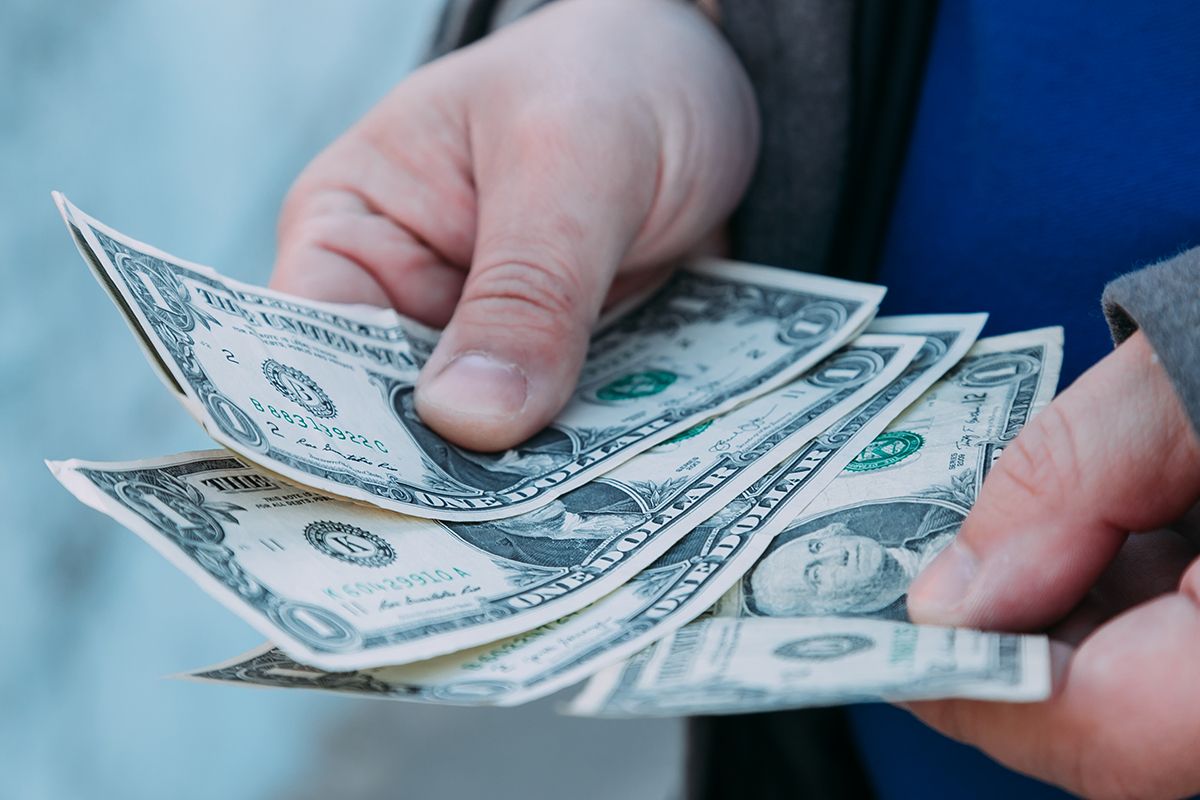Since Black Friday in 1983, exchange rate instability has been entrenched in Venezuela, and for most of the Chavista quarter-century, the dollar’s exchange rate has experienced official and parallel jumps practically non-stop. As the US currency becomes more expensive, we keep breaking “psychological barriers,” the most recent being 100 Bs.
We know very well that we are talking about a nominal number. Throughout the country’s economic history, the dollar has surpassed 100 Bs on four occasions, the last three of which have been possible due to monetary reconversion processes, which, by removing zeros from the currency, reduce the numerical expression, although not the uncertainty.
The First Time Was in Civil Democracy
The first time the dollar reached 100 Bs was in October 1993. The country was going through a political crisis after the dismissal of Carlos Andrés Pérez in May, and two coup attempts (the first led by Hugo Chávez) had occurred in the previous 18 months.
“Throughout 1993, the Central Bank of Venezuela implemented a predetermined exchange rate rule (Crawling Peg) to reduce pressure on international reserves during a period of macroeconomic and political instability and to facilitate the stable slippage of the exchange rate without generating additional pressure on domestic prices,” the BCV itself reflected on the dollar’s movements in that turbulent year, which also had a presidential election in December, in which Rafael Caldera was elected. The dollar continued to rise, and that year closed at 106 bolivars (a 25% devaluation compared to 1992).
Ten years later, in 2003, exchange controls were established, and with them, the parallel dollar began to come to life. The path to accessing the greenback was marked by bank paperwork that many managed to navigate to obtain the dollars authorized by the Foreign Exchange Administration Commission (Cadivi), while the exchange rate was fixed (it was updated annually until 2005 and then again in 2010), which made the demand for cheap dollars exaggerated.
The Second Thanks to the First Reconversion
In 2008, the monetary reconversion that removed three zeros from the bolívar came into effect. Thus, the official dollar, which was worth Bs 2,144.60 at the close of 2007, became worth 2.14 strong bolivars (Bs.F.), while the parallel rate reconverted from Bs 5,700 to Bs.F. 5.5. With fewer zeros, but with the pressure of a mismanaged economy, the parallel dollar reached the 100 bolivar mark again in 2014 (already with Nicolás Maduro in power). It was September 26th, to be precise, according to the historical record published by DolarToday, at that time the website that reported the unofficial exchange rate, an activity stipulated as illegal by the Law Against Exchange Illicits.
Regarding the context of that year, lawyer José Ignacio Hernández points out in the book “Control de cambio y de precios en Venezuela, Auge y colapso (2022)” [Exchange and Price Controls in Venezuela, Rise and Collapse (2022)] that “it was evident that both controls (price and exchange) had been exhausted. Various proposals were formulated within the government of then-President Nicolás Maduro to make the scope of these controls more flexible, and even the Law of the Exchange Regime and its Illicits was enacted that year, which laid the groundwork for dismantling centralized exchange controls. However, the weakness of the Maduro government (elected in a questioned process in April 2013) and the civil protests organized in that year 2014 aggravated internal discrepancies and prevented these reforms from advancing. On the contrary, the government maintained, and even aggravated, centralized controls.”
Detached from reality, in that month of September, the official dollar had three versions. One for basic goods at Bs 6.30 and two others from the Alternative Foreign Exchange System (Sicad) with values of Bs 11.60 and Bs 84.4. In November of that 2014, the Sicad II dollar reached Bs 128.5. The parallel rate ended the year at Bs 173, for a devaluation of 63%.
The Third Was Brought by Hyperinflation
Submerged in hyperinflation (there were still no sanctions on oil sales), in 2018 the government of Nicolás Maduro eliminated exchange controls, implemented an improvised monetary reconversion that removed five zeros from the bolívar, and executed a drastic devaluation that equated the official dollar with the parallel one (which did not last long). In August, the dollar’s price went from Bs 5,921,486.23 to 59.21 sovereign bolivars (due to the reconversion). Two months later, on October 3rd, the parallel dollar surpassed Bs S 100 for the third time, closing that day at Bs S 101.34. The official dollar crossed that barrier on December 3rd of that year when it was quoted at Bs S 151.64, after a jump from Bs S 85.87 the previous day.
These were the times when the petro was sold as a crypto-solution to the economic catastrophe created by Chavismo. In a national broadcast on August 17th, Maduro announced that one petro was equivalent to Bs S 3,600 (figure with the new reconversion applied), thus recognizing an exchange rate of Bs S 60 per dollar. A 96% devaluation overnight.
“August 17, 2018, will go down in history as another Black Friday. President Nicolás Maduro made a series of announcements in which he tried to explain the fundamental points of an economic measures package, surprising with a huge salary increase, raised taxes, and devalued the currency,” a media outlet specializing in economics reported at the time.
The Fourth and Perhaps Not the Last
To try to cure the hangover of hyperinflation on the country’s numbering system, Maduro applied a new monetary reconversion. This time, six zeros had to be removed from the currency. It was launched in October 2021, and at that time, the parallel dollar was averaging Bs S 4,470,000 (there was no longer a single place to see the price, and the average trend prevailed to guide informality). With six fewer zeros, the exchange rate began to look like this: 4.47 digital bolivars. The official rate was almost the same, trading at 4.39 digital bolivars.
“We find ourselves in what I have called the ‘Bodegón Pax,’ with conspicuous consumption and liberalization emerging as a relief from the catastrophe generated by government deficiencies and the unforeseen externalities of the past decade. The features of this phenomenon are an accelerated informal deregulation of economic life, a significant contraction of public spending, an improvement in the supply of products accompanied by greater inequality in access to those products, relative political calm, and widespread disillusionment. The context of this situation lies both in the complex humanitarian emergency and in the destruction of the internal productive apparatus, and in the current political repression,” Guillermo Tell Aveledo refers to the moment when this new “monetary expression” occurs.
Already in October 2021, the bolívar matters little, and dollars matter a lot (in terms of foreign trade). The country lives in a multi-currency reality, and as the numbers became large again, they were reduced. Almost four years later, the architects of the disaster remain in power (after stealing a presidential election), and in the last week of March 2025, the dollar surpasses Bs 100 for the fourth time. The gap recalls the worst moments of exchange controls, although the dollar of the Exchange Market System (SMC) is not far behind and is accelerating more and more.
Will it be the last?

